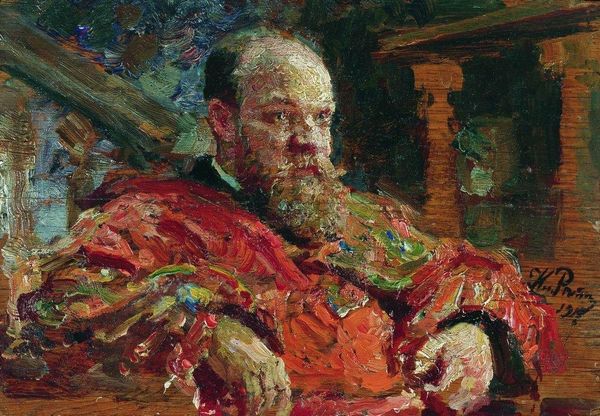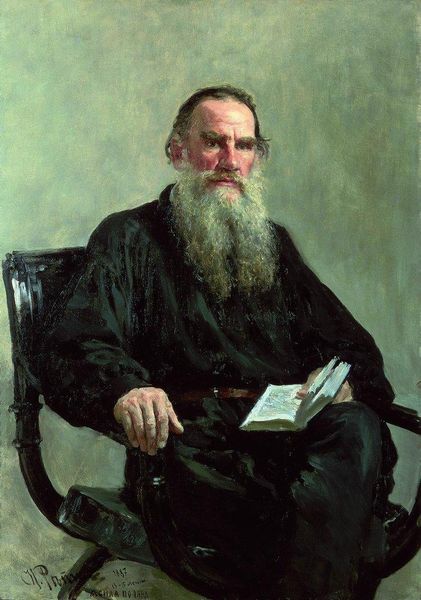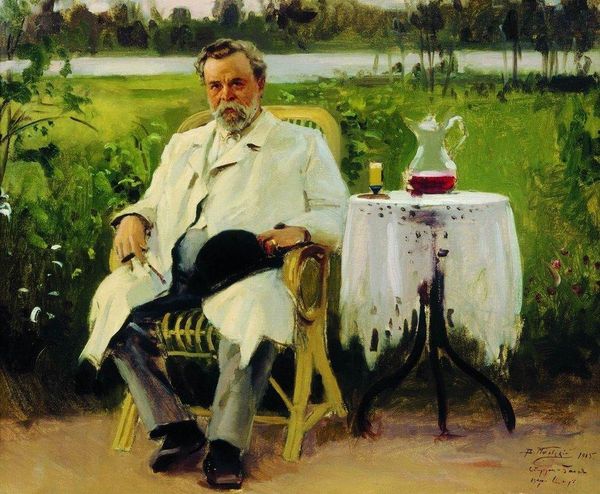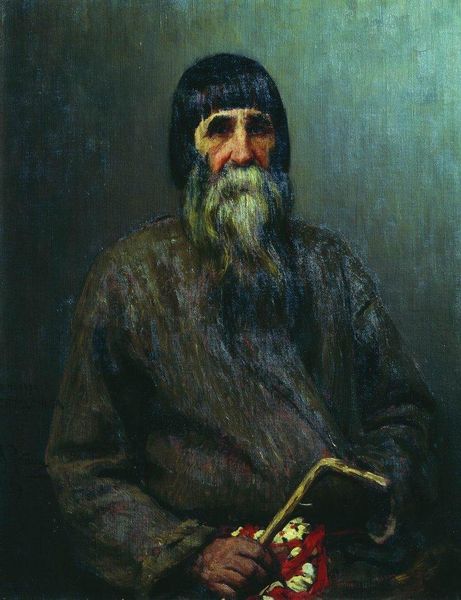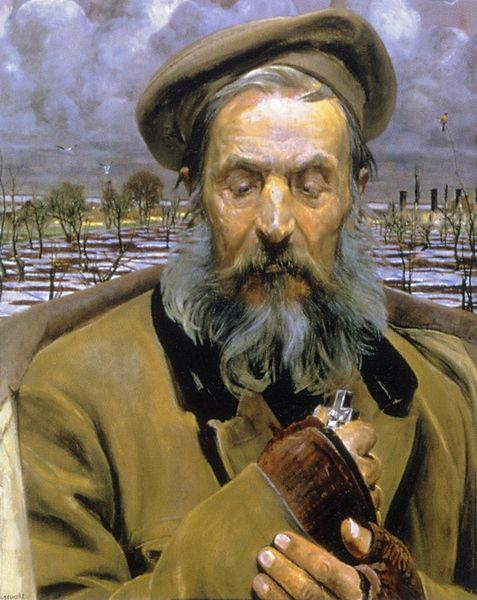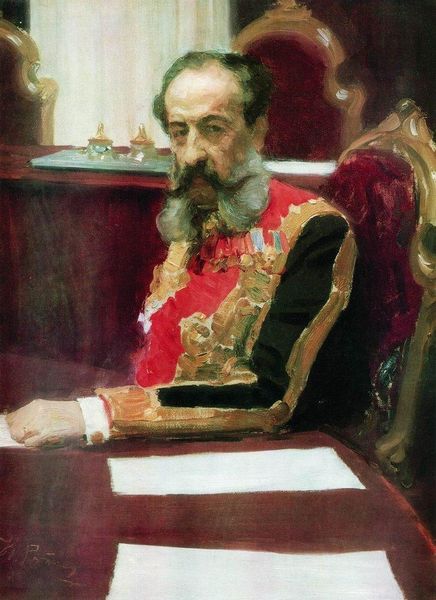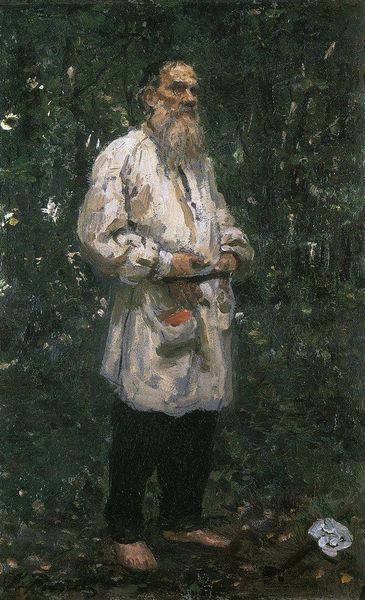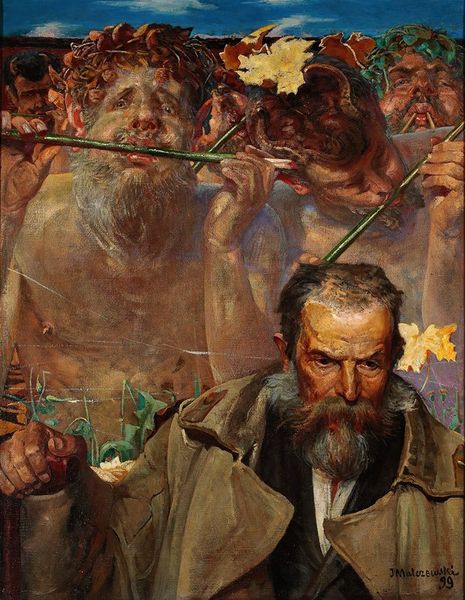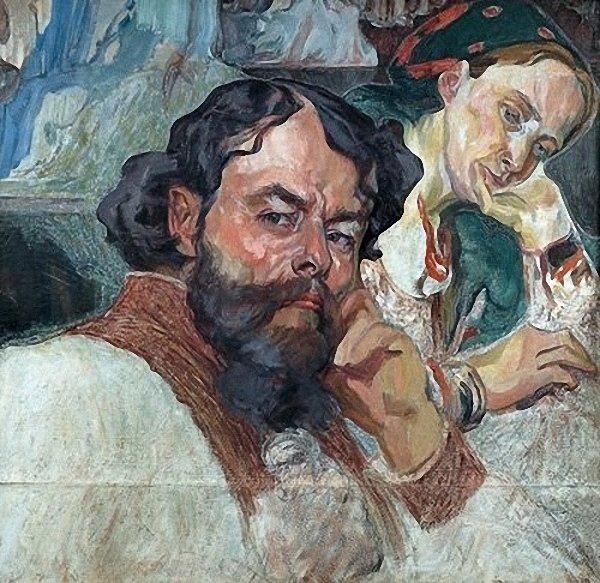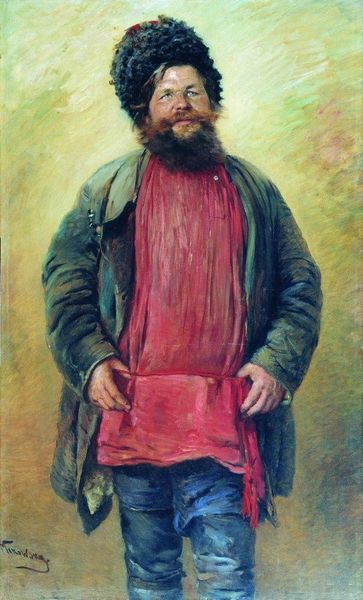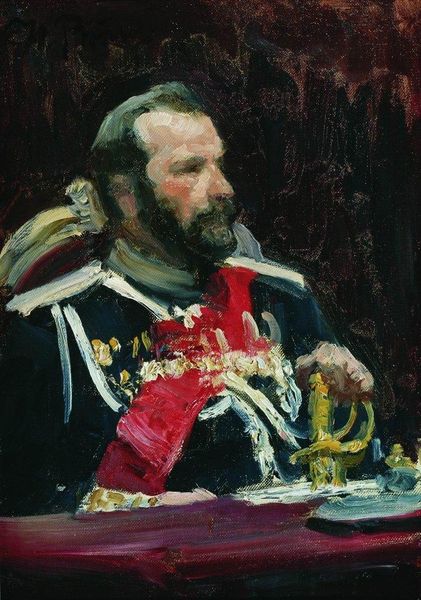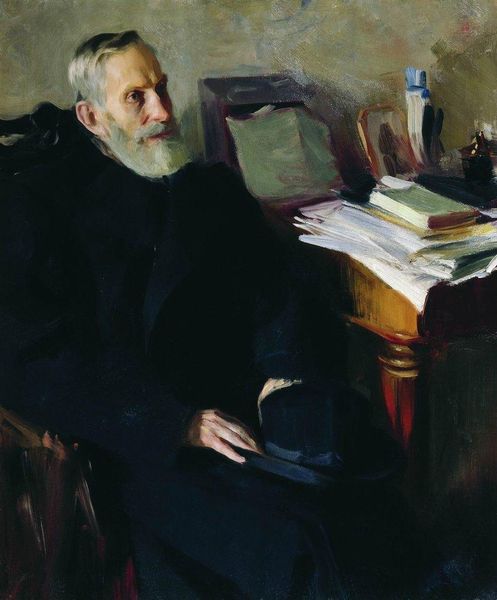
oil-paint, impasto
#
portrait
#
oil-paint
#
oil painting
#
impasto
#
portrait reference
#
russian-avant-garde
#
realism
Dimensions: 107 x 78 cm
Copyright: Public domain
Editor: We’re looking at Ilya Repin’s 1913 oil painting, "Portrait of Vladimir Bekhterev." There’s a fascinating looseness to the brushstrokes, almost unfinished, yet it captures this man's commanding presence. What do you see in this portrait, especially considering the period in which it was painted? Curator: It's precisely that tension, between the almost radical brushwork and the very establishment figure of Bekhterev, that interests me. Consider the context: 1913, on the eve of World War I and major social upheaval in Russia. Repin, already a celebrated Realist painter, is here experimenting with a more modern style. This "unfinished" quality might reflect the instability and the shifting grounds of Tsarist Russia. The public role of portraiture at the time was often to legitimize authority. Does this image perform that function effectively? Editor: I'm not sure it does. While Bekhterev's military attire suggests authority, the loose, almost frenetic brushstrokes seem to undermine that. Was Repin intentionally critiquing the establishment, or just experimenting stylistically? Curator: The line is often blurred, and that’s where art gets exciting. Repin was deeply invested in social realism, in depicting the lives of ordinary people. However, as a figure closely linked to the Imperial Academy, it would have been risky for him to create a visibly critical portrait of someone of Bekhterev's status. Instead, consider this painting as a quiet disruption, an image that speaks of cultural unease more than blatant opposition. The politics are baked in but somewhat inscrutable. Notice how the background, barely sketched in, pushes the figure forward as though destabilizing any fixed understanding of “place.” Editor: So, the portrait speaks volumes, not just about the sitter, but about the political climate. Thanks; I see this work so differently now. Curator: Indeed. The power of art often lies in its ability to capture unspoken anxieties and shifting power dynamics, revealing much more than a simple likeness. It highlights the interplay between art and its socio-political environment.
Comments
No comments
Be the first to comment and join the conversation on the ultimate creative platform.
